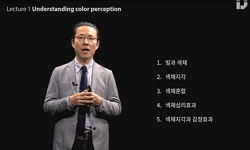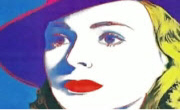동아대학교박물관에 소장된 <초충도수병(草蟲圖繡屛)>(이하 <수병>)은 보물 제595호로 지정되어 있으며 초충도 회화작품보다 더 정교하고 섬세한 사실적 표현과 다채한 입체적 구성...
http://chineseinput.net/에서 pinyin(병음)방식으로 중국어를 변환할 수 있습니다.
변환된 중국어를 복사하여 사용하시면 됩니다.
- 中文 을 입력하시려면 zhongwen을 입력하시고 space를누르시면됩니다.
- 北京 을 입력하시려면 beijing을 입력하시고 space를 누르시면 됩니다.

동아대학교박물관 소장 <초충도수병>의 직물과 자수 연구 = Study on Fabric and Embroidery of <Embroidered Screen with Grass and Insects> Possessed by Dong-A University Museum
한글로보기https://www.riss.kr/link?id=A106350554
-
저자
심연옥 (한국전통문화대학교) ; Sim, Yeon-ok
- 발행기관
- 학술지명
- 권호사항
-
발행연도
2013
-
작성언어
Korean
- 주제어
-
등재정보
KCI등재
-
자료형태
학술저널
-
수록면
230-250(21쪽)
-
KCI 피인용횟수
3
- 제공처
- 소장기관
-
0
상세조회 -
0
다운로드
부가정보
국문 초록 (Abstract)
동아대학교박물관에 소장된 <초충도수병(草蟲圖繡屛)>(이하 <수병>)은 보물 제595호로 지정되어 있으며 초충도 회화작품보다 더 정교하고 섬세한 사실적 표현과 다채한 입체적 구성으로 미술사 분야에서 그 가치가 높이 평가되어 왔다. 그러나 <수병>이 자수 작품임에도 불구하고 현재까지 섬유공예적 측면에서의 분석과 연구는 이루어지지 않았다. 본고에서는 <수병>의 바탕직물, 자수색사, 자수기법 등을 과학적 기기를 사용하여 조사 분석함으로써 <수병>의 문양소재와 섬유공예적 특징 및 <수병>이 섬유공예사에서 갖는 가치를 규명하였다. 연구 결과, <수병>은 8폭 병풍으로 이루어져 있으며 소재와 구도는 일반적인 초충도 회화작품과 유사하다. 각 폭의 주제문양은 제1폭에서부터 순서대로 오이, 맨드라미, 원추리, 여주, 패랭이, 수박, 가지, 들국화로 이루어져 있다. <수병>의 문양 중 여주는 현전하는 초충도 회화작품에서는 볼 수 없는 특별한 소재이다. 제8폭은 곤충, 파충류 등의 문양이 없이 들국화만 단독으로 시문하여 초충도의 전형적인 형식과 차별이 있다. <수병>의 직물은 지금까지 장식용 자수에서는 볼 수 없었던 검은색을 사용하여 다채한 색사를 강조하여 극대로 표현하고자 했음을 알 수 있다. 바탕직물은 5매 공단[무문단(無紋緞)]을 사용하였다. 자수사는 극히 미약하게 꼬임을 준 반푼사를 사용하였으며 꼬임의 방향은 우연이다. 한 가지 색의 단사를 사용하기도 하고 때로는 두 가지 색을 병사로 사용하거나 합연사한 혼합색을 사용하여 입체적으로 표현하였다. 색상은 열화되고 퇴색이 심하여 원래의 색은 알 수 없지만 가장 많이 사용된 색은 황색계열에서 녹색계열의 색이며 청색, 갈색, 자색 등이 비교적 잘 남아있다. 원추리, 패랭이, 딸기 등의 색은 현재 적황색으로 남아 있는데 초충도와 비교해 볼 때 원래는 주황색 또는 홍색이었을 것으로 추정된다. 자수의 기법은 대부분 표면평수를 사용하여 면을 채우고 있다. 이를 통해 색사의 낭비를 줄이고자 했던 옛 여인들의 알뜰한 지혜가 엿보인다. 평수는 면을 장식하는 비교적 간단한 자수법이지만 색사를 다양화하고 면을 분할하여, 수직, 수평, 사선평수를 배합하고 때로는 자릿수와 같이 서로 맞물리게 자수하여 다양한 질감과 양감을 표현하였다. 곤충의 몸통은 가장자리수와 이음수, 평수를 혼합하여 입체적으로 표현하고 있으며, 특히 가장자리수의 활용이 주목된다. 그 외 이음수로 잎맥 등을 입체감 있게 나타내고, 제7폭의 쇠뜨기는 표면솔잎수를 층층이 자수하여 사실적으로 표현하였다. 패랭이, 딸기, 오이 등에는 평수 위에 장식수를 더하여 세세한 묘사를 더했다. <수병>은 회화사, 문화사적으로도 가치가 크지만 한국 자수공예사에 있어서도 우수한 한국적 자수기법과 색채를 사용하여 신사임당 초충도의 모습을 가장 잘 표현하고 있는 점에서 큰 중요성을 지닌다고 할 수 있다.
다국어 초록 (Multilingual Abstract)
<Embroidered Screen with Grass and Insects (草蟲圖繡屛)> possessed by Dong-A University Museum is designated as Treasure No. 595, and has been known for a more exquisite, delicate and realistic expression and a colo...
<Embroidered Screen with Grass and Insects (草蟲圖繡屛)> possessed by Dong-A University Museum is designated as Treasure No. 595, and has been known for a more exquisite, delicate and realistic expression and a colorful three-dimensional structure compared to the 'grass and insect painting' work and its value in art history. However, it has not been analyzed and studied in fabric craft despite it being an embroidered work. This study used scientific devices to examine and analyze the Screen's fabric, thread colors, and embroidery techniques to clarify its patterns and fabric craft characteristics for its value in the history of fabric craft. As a result, <Embroidered Screen> consists of eight sides and its subject matters and composition are similar to those of the general paintings of grass and insects. The patterns on each side of the 'grass and insect painting' include cucumber, cockscomb, day lily, balsam pear, gillyflower, watermelon, eggplant, and chrysanthemums from the first side. Among these flowers, the balsam pear is a special material not found in the existing paintings of grass and insect. The eighth side only has the chrysanthemums with no insects and reptiles, making it different from the typical forms of the paintings of grass and insect. The fabric of the Screen uses black that is not seen in other decorative embroideries to emphasize and maximize various colors of threads. The fabric used the weave structure of 5-end satin called Gong Dan [non-patterned satin]. The threads used extremely slightly twisted threads that are incidentally twisted. Some threads use one color, while other threads use two or mixed colors in combination for three-dimensional expressions. Because the threads are severely deterioration and faded, it is impossible to know the original colors, but the most frequently used colors are yellow to green and other colors remaining relatively prominently are blue, grown, and violet. The colors of day lily, gillyflower, and strawberries are currently remaining as reddish yellow, but it is anticipated that they were originally orange and red considering the existing paintings of grass and insects. The embroidery technique was mostly surface satin stitch to fill the surfaces. This shows the traditional women's wisdom to reduce the waste of color threads. Satin stitch is a relatively simple embroidery technique for decorating a surface, but it uses various color threads and divides the surfaces for combined vertical, horizontal, and diagonal stitches or for the combination of long and short stitches for various textures and the sense of volume. The bodies of insects use the combination of buttonhole stitch, outline stitch, and satin stitch for three-dimensional expressions, but the use of buttonhole stitch is particularly noticeable. In addition to that, decorative stitches were used to give volume to the leaves and surface pine needle stitches were done on the scouring rush to add more realistic texture. Decorative stitches were added on top of gillyflower, strawberries, and cucumbers for a more delicate touch. <Embroidered Screen> is valuable in the history of paintings and art and bears great importance in the history of Korean embroidery as it uses outstanding technique and colors of Korea to express the Shin Sa-im-dang's 'Grass and Insect Painting'.
참고문헌 (Reference)
1 심연옥, "한국직물오천년" 고대직물연구소 2002
2 심연옥, "한국직물문양 이천년" 고대직물연구소춢판부 2006
3 김태자, "중요민속자료에 나타난 전통자수의 문양과 기법, In 문화재대관(중요민속자료 복식·자수 편)" 문화재청 무형문화재과 2006
4 고인정, "조선시대 초충도 연구 : 신사임당(申師任堂)의 초충도(草蟲圖)를 중심으로" 목포대학교 교육대학원 2006
5 남주현, "조선시대 초충도 연구" 홍익대학교 대학원 2003
6 정용재, "적의 유물의 색과 금사 분석, In 왕실복식 적의 보고서" 국립고궁박물관 2011
7 강릉시 오죽헌, "아름다운 여성, 신사임당" 강릉시 오죽헌·시립박물관 2004
8 국립고궁박물관, "아름다운 궁중자수" 2013
9 김기범, "신사임당 회화의 초충도 연구" 충북대학교 교육대학원 2010
10 정재문화재보존연구소, "동아대학교박물관 소장 보물 제595호傳 申師任堂 筆 草蟲圖 繡屛 보존처리 보고서" 2002
1 심연옥, "한국직물오천년" 고대직물연구소 2002
2 심연옥, "한국직물문양 이천년" 고대직물연구소춢판부 2006
3 김태자, "중요민속자료에 나타난 전통자수의 문양과 기법, In 문화재대관(중요민속자료 복식·자수 편)" 문화재청 무형문화재과 2006
4 고인정, "조선시대 초충도 연구 : 신사임당(申師任堂)의 초충도(草蟲圖)를 중심으로" 목포대학교 교육대학원 2006
5 남주현, "조선시대 초충도 연구" 홍익대학교 대학원 2003
6 정용재, "적의 유물의 색과 금사 분석, In 왕실복식 적의 보고서" 국립고궁박물관 2011
7 강릉시 오죽헌, "아름다운 여성, 신사임당" 강릉시 오죽헌·시립박물관 2004
8 국립고궁박물관, "아름다운 궁중자수" 2013
9 김기범, "신사임당 회화의 초충도 연구" 충북대학교 교육대학원 2010
10 정재문화재보존연구소, "동아대학교박물관 소장 보물 제595호傳 申師任堂 筆 草蟲圖 繡屛 보존처리 보고서" 2002
11 고연희, "동아대학교박물관 소장 <초충도수병>, 그 회화사적 가치, In 강원의 위대한 유산" 국립춘천박물관 2012
12 국립부여박물관, "고대직물의 이해-고대직물의 양상과 전개" 국립부여박물관·한국복식학회 2011
13 趙豐, "遼代絲綢" 沐文堂美術出版社有限公司 2004
14 수덕사 근역성보관, "至心歸命禮-織·染·繡, 그리고 佛敎" 수덕사 근역성보관 2006
15 문춘, "申師任堂의 草蟲圖에 관한 硏究" 수원대학교 미술대학원 2012
16 정영양, "Painting with a Needle" Abrams, Inc 2003
동일학술지(권/호) 다른 논문
-
- 국립문화재연구원
- 김태우
- 2013
- KCI등재
-
- 국립문화재연구원
- 김태형
- 2013
- KCI등재
-
- 국립문화재연구원
- 박형호
- 2013
- KCI등재
-
출토 청동유물 부식의 형태학적 고찰 및 부식생성물의 특성 연구
- 국립문화재연구원
- 이은우
- 2013
- KCI등재
분석정보
인용정보 인용지수 설명보기
학술지 이력
| 연월일 | 이력구분 | 이력상세 | 등재구분 |
|---|---|---|---|
| 2027 | 평가예정 | 재인증평가 신청대상 (재인증) | |
| 2021-01-01 | 평가 | 등재학술지 유지 (재인증) |  |
| 2018-01-01 | 평가 | 등재학술지 유지 (등재유지) |  |
| 2015-01-01 | 평가 | 등재학술지 유지 (등재유지) |  |
| 2011-01-01 | 평가 | 등재학술지 선정 (등재후보2차) |  |
| 2010-01-01 | 평가 | 등재후보 1차 PASS (등재후보1차) |  |
| 2008-01-01 | 평가 | 등재후보학술지 선정 (신규평가) |  |
학술지 인용정보
| 기준연도 | WOS-KCI 통합IF(2년) | KCIF(2년) | KCIF(3년) |
|---|---|---|---|
| 2016 | 0.39 | 0.39 | 0.32 |
| KCIF(4년) | KCIF(5년) | 중심성지수(3년) | 즉시성지수 |
| 0.3 | 0.32 | 0.57 | 0.08 |




 RISS
RISS







